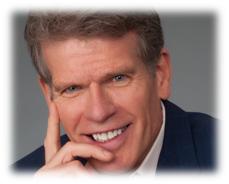As the PPM journey continues to elate, confuse, confound, and cause wonder about the state of radio measurement, we are increasingly seeing the power that just a handful of metered respondents can have on the impact of the ratings.
This is an issue that I will gladly let Arbitron deal with among their clients, but every researcher in 2012 will reluctantly admit that respondent cooperation is a bigger challenge than ever. It’s true everywhere you go, and with all research methdologies.
So oftentimes, the few have a tremendous say in the outcome of the game.
Instead of letting that work against you, radio brands have an opportunity to make it work in their favor.
 A recent blog post in the esteemed Harvard Business Review has stirred up much controversy. It starts with the title – “Marketing Is Dead” – and it goes from there. Penned by consultant and author Bill Lee, the article speaks to the power of social and community-based marketing and customer relationships.
A recent blog post in the esteemed Harvard Business Review has stirred up much controversy. It starts with the title – “Marketing Is Dead” – and it goes from there. Penned by consultant and author Bill Lee, the article speaks to the power of social and community-based marketing and customer relationships.
I’ll link to it here so you can read it in its entirety, and also check out the often fiery comments that followed.
But a key part of Lee’s premise speaks to the potential power of small groups of brand advocates, and that caught our attention:
Find your customer influencers. Many firms spend lots of resources pursuing outside influencers who’ve gained following on the Web and through social media. A better approach is to find and cultivate customer influencers and give them something great to talk about. This requires a new concept of customer value that goes way beyond customer lifetime value (CLV), which is based only on purchases. There are many other measures of a customer’s potential value, beyond the money they pay you. For example, how large and strategic to your firm is the customer’s network? How respected is she?
One of Microsoft’s “MVP” (Most Valuable Professional) customers is known as Mr. Excel to his followers. On some days, his website gets more visits than Microsoft’s Excel page — representing an audience of obvious importance to Microsoft, which supports Mr. Excel’s efforts with “insider knowledge” and previews of new releases. In return, Mr. Excel and other MVPs like him are helping Microsoft penetrate new markets affordably.
Microsoft? One guy?
That’s the Power of One. In our new media environment, one person can make a difference.
WXYZ-TV’s Stephen Clark has talked about how “The Backchannel” took off in the Detroit social media community, catalyzed by one influential viewer known to the Twitter universe as “Charlie Curve.” In reality, Charlie Wollborg is a creative marketing guy who saw the potential of a TV news underground Twitter network and acted on it. His more than 12,000 followers amp up his ability to move the needle. You can watch “The Backchannel” story and “Charlie Curve’s” impact below:
>EMAIL RECIPIENTS: CLICK HERE TO WATCH WXYZ’S STEPHEN CLARK<
Every great brand has these amazing people who listen and love the station, are connected to other people like themselves, and are ready and willing to help you market your brand – IF (a big IF), as Lee says, you “help them build social capital.”
How do you do this? The traditional radio solution is to bribe them – pay them off with prizes and other perks in exchange for their loyalty. But Lee’s solution – and ours – is to give them something to talk about, provide them with experiences they cannot get elsewhere, and help them tell your brand’s story.
These attributes run counter to the way we’ve always done it in radio. And that’s one of the reasons why it can be so effective.
 The “free” nature of social media is one of the biggest reasons why brands often fail in their ability to use it effectively. Some wrongly believe that because there is essentially no cost involved, it is easy. And when the corner office sees something with no price tag, it is sadly devalued in their analytical estimation.
The “free” nature of social media is one of the biggest reasons why brands often fail in their ability to use it effectively. Some wrongly believe that because there is essentially no cost involved, it is easy. And when the corner office sees something with no price tag, it is sadly devalued in their analytical estimation.
Both of these conclusions are off-base, and they go a long way toward explaining why so many stations are struggling with social media. And perhaps why even Facebook is grinding its wheels with the traditional advertising and marketing communities.
Social media at your station should not be a cottage industry or a hobby. Brand advocacy should not be a side show activity delegated to assistants and interns.
Many consumer brands are unable to even identify these people because they simply don’t exist. Most radio stations, on the other hand, are blessed with fans with the potential to be brand advocates. Smart stations have the ability to locate them, and then nurture and grow with these customer evangelists.
It’s about creating great fan experiences. And sometimes it’s a simple as just connecting with one person.
It’s time to start thinking differently.
- The Digital Dash In 2025: Now You See It - March 3, 2025
- Radio: Don’t Get Scammed By “The 3-Minute Monte” - February 28, 2025
- “I Watch A Lot Of Baseball On The Radio” - February 27, 2025




Leave a Reply